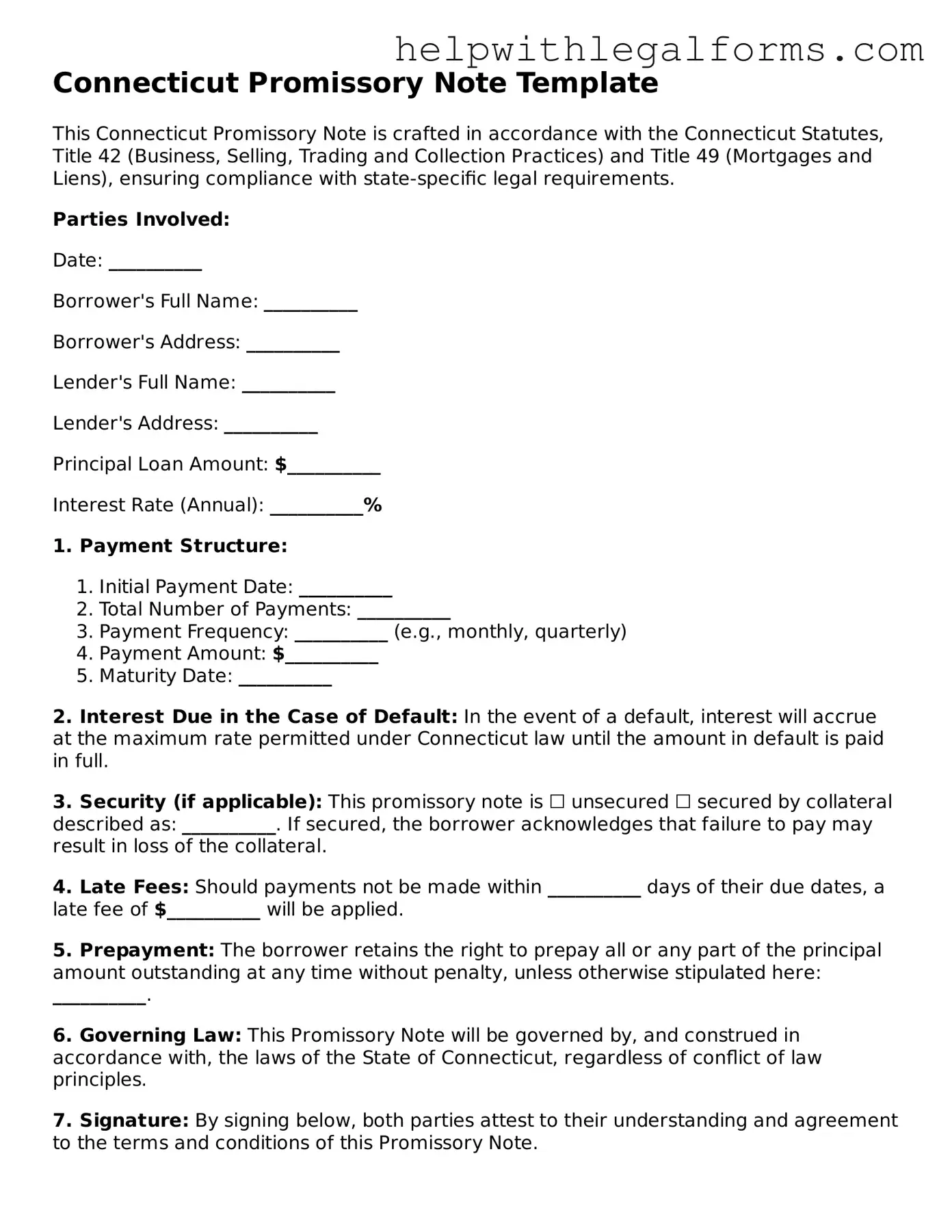What is a Connecticut Promissory Note?
A Connecticut Promissory Note is a legal document that outlines the details of a loan agreement between two parties in the state of Connecticut. It documents the amount of the loan, the interest rate, repayment schedule, and the obligations of the borrower to repay the lender under specified terms.
Is a Connecticut Promissory Note legally binding?
Yes, a Connecticut Promissory Note is legally binding if it is properly executed, containing all necessary signatures and adhering to Connecticut state laws. Both the borrower and the lender should keep a copy of the signed document.
Do I need a witness or notary for a Connecticut Promissory Note?
While not always required, having a witness or notarizing the promissory note can add an extra layer of legal protection and validity. It is recommended to consider notarization or a witness to ensure the enforceability of the document.
What should be included in a Connecticut Promissory Note?
A Connecticut Promissory Note should include the date of the agreement, names and addresses of both the borrower and lender, the principal loan amount, interest rate, repayment schedule, late fees, and the signatures of both parties.
How is interest determined for a Connecticut Promissory Note?
Interest on a Connecticut Promissory Note must comply with Connecticut's usury law limitations unless a specific exemption applies. The parties can agree on the interest rate, but it must not exceed the legal limit.
What happens if the borrower fails to repay according to the Connecticut Promissory Note?
If the borrower fails to comply with the repayment terms outlined in the promissory note, the lender may pursue legal action to recover the owed amount. This might include suing for the balance due and any interest and fees stipulated in the agreement.
Can I modify a Connecticut Promissory Note after it's been signed?
Yes, a Connecticut Promissory Note can be modified, but any changes must be agreed upon by both the borrower and lender. The modification should be in writing and attached to the original promissory note, with both parties providing new signatures.
Is there a specific format for a Connecticut Promissory Note?
While there is no rigid format mandated by law, a Connecticut Promissory Note should be drafted clearly and include all essential terms of the loan agreement. Clarity and completeness are key to ensure it is legally binding.
Can a Connecticut Promissory Note be used for both secured and unsecured loans?
Yes, a Connecticut Promissory Note can be structured as either secured or unsecured. A secured note is backed by collateral that the borrower agrees to forfeit to the lender if they fail to repay the loan, while an unsecured note is not backed by any collateral.
Where can I find a template for a Connecticut Promissory Note?
Templates for Connecticut Promissory Notes can be found online through legal websites, or you can consult a legal professional to draft a customized promissory note that meets your specific needs and complies with Connecticut law.
